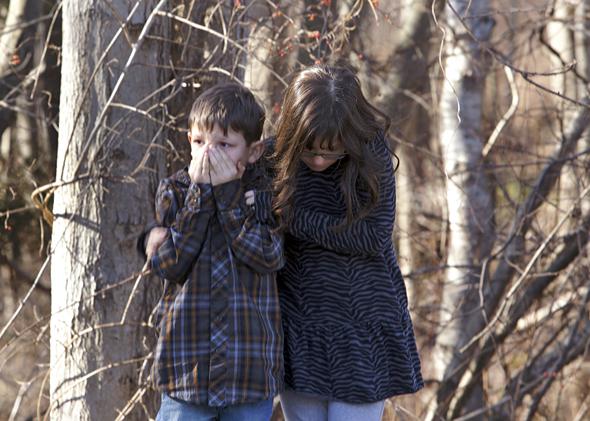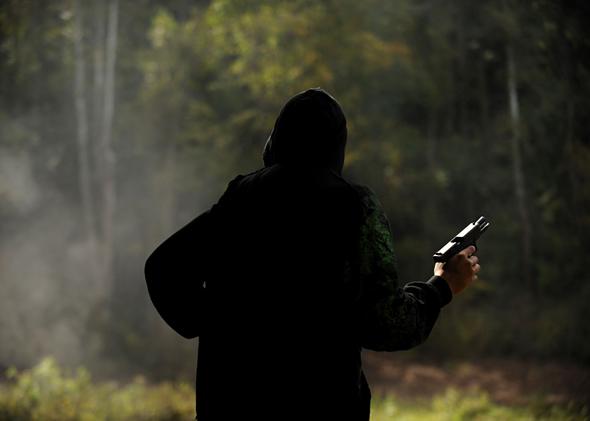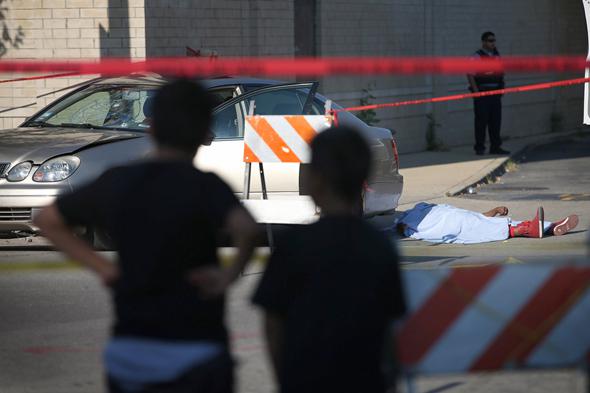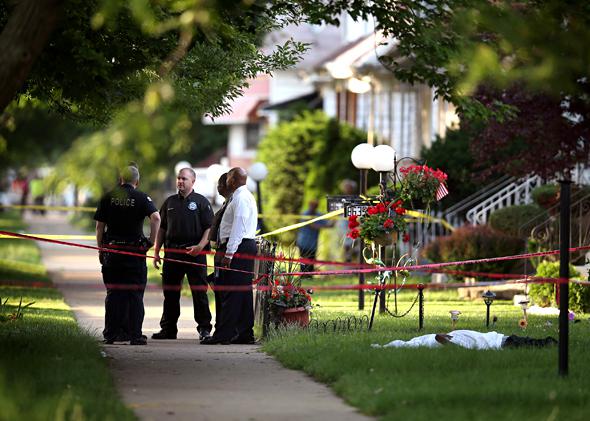Garen Wintemute, a professor of emergency room medicine and director of the Violence Prevention Research Program at the University of California–Davis, is one of a handful of U.S. researchers brave enough to tackle the problem of gun violence. He tells Tiffany O’Callaghan why it is so hard to make inroads.
Tiffany O’Callaghan: How bad is gun violence in the U.S.?
Garen Wintemute: It takes upwards of 30,000 lives a year and injures another 75,000. We spend $100 billion a year on this problem, including the criminal justice system’s efforts to prevent and punish.
TO: Why is it so difficult to tackle?
GM: Federal funding for research is less than $200,000 a year. In contrast, public health research on motor vehicle accidents—which also claim 30,000 lives each year—receives close to $4 million. So the data that might be used to identify patterns is simply not there.
TO: Why is there so little money to research it?
GM: This did not happen by accident, there was a conscious, deliberate and successful effort to prevent funding from being available. It began in the mid-1990s and continues today.

Photo by Michelle McLoughlin/Reuters
TO: After recent mass shootings, hasn’t funding for gun violence research received more attention?
GM: There is a proposal in Congress to allow for $10 million in research funding. But I suspect it essentially has no chance of making it. Even if it did, our Department of Health and Human Services prohibits any of the funds from being used, and I’m quoting directly here, “to advocate or promote gun control.” That means even if I had money to do the research, it would be a crime to talk about the policy implications.
TO: Is there any prospect of limiting access to guns?
GM: It is too late for that, if you mean a large-scale disarmament as has been accomplished in other countries. We cannot remove firearms from society. There are 315 million people and more than 300 million firearms. We are going to have to find solutions that acknowledge the widespread availability of firearms.
TO: What interventions do we know actually work?
GM: Some of the best evidence is on background checks. Finding people who are prohibited from owning firearms and preventing them from acquiring any reduces their risk of committing crimes that involve firearms by 25 to 30 percent. There is also good evidence that regulating the market makes it more difficult to acquire firearms for illegal purposes.

Photo by Matt McClain/Getty Images
Still, based on the evidence, our criteria for denying purchase and possession don’t go far enough. We prohibit felons from owning firearms, but we should also prohibit people with a history of violent misdemeanors or alcohol abuse, which is associated with a very large increase in risk of violence.
TO: What should the research priorities be?
GM: We need to re-examine the basic epidemiology of firearm violence and determine what the risk factors are, as well as the things that decrease risk. We also need to look at criminal use of firearms—how do they become so readily available on the street? The more we understand the illegal market, the more we can intervene and disrupt it. And we need to study interventions to prevent violence. There are efforts at the state and local level to try new things, but often we don’t have good data on whether or not they make a difference.
TO: What new strategies are being trialed?
GM: There is a lot of interest in recovering firearms from people who bought them legally but have since been prohibited after being convicted of a violent crime, put under a restraining order, or developing serious mental illness. California has such a program, but it’s too soon to know how well it’s working.

Photo by David McNew/Getty Images
TO: A recurring issue with mass shootings seems to be untreated mental health problems.
GM: There is widespread belief that serious mental illness is associated with a substantial increase in the risk of violence. That is simply not true. The mental health criteria for prohibiting someone from owning firearms need to be revised. They probably let a lot of people who present an increased risk purchase firearms and at the same time rope in people who do not.
TO: Is there substance to the argument that when more people carry guns, everyone is safer?
GM: In 1998 John Lott wrote a book titled More Guns, Less Crime. He has generated studies supporting that conclusion, but his work has been debunked in a number of ways. In the scientific community, the consensus is that he is wrong. Increases in firearm ownership and use are associated with increases in firearm violence.
TO: What about the idea that Good Samaritans with guns could have intervened in mass shootings?
GM: It’s hard to say. If a trained shooter had been able to shoot James Holmes in that movie theatre in Colorado, then maybe fewer people would have been hurt. But when Gabby Giffords was shot in Arizona, an armed man was preparing to shoot the person he saw with a gun. People at the scene said, “Wait, the guy with the gun is the good guy!” Unarmed citizens had disarmed Jared Loughner. The man with the gun has said that, if he reacted more quickly, he would have shot the wrong guy.
TO: You have said that we can’t focus on trying to prevent the last tragedy. What do you mean?
GM: These events are all different; the precise circumstances of the Sandy Hook school shooting won’t occur again. Focusing on preventing the last shooting is like fighting the last war: The next one will be different.
But speaking more broadly, most firearm violence does not involve mass shootings. Far and away the larger share of the problem is taken up by violence that occurs day in, day out and doesn’t make the headlines.

Photo by Scott Olson/Getty Images
TO: Why have you dedicated yourself to studying gun violence as a public health problem?
GM: Initially, I worked more broadly on injury prevention. But over time I came to realize that firearm violence was unique in that it was a very large problem on which few people were working. A lot of us have realized that, as clinicians, the way to reduce the number of people who die from gun violence is to prevent them from being shot in the first place.
TO: What is it like to treat a person who has been shot?
GM: The vast majority of people who die from gun violence never get to the emergency room. But those who do are typically in a great deal of pain, and very afraid.
This article originally appeared in New Scientist.
